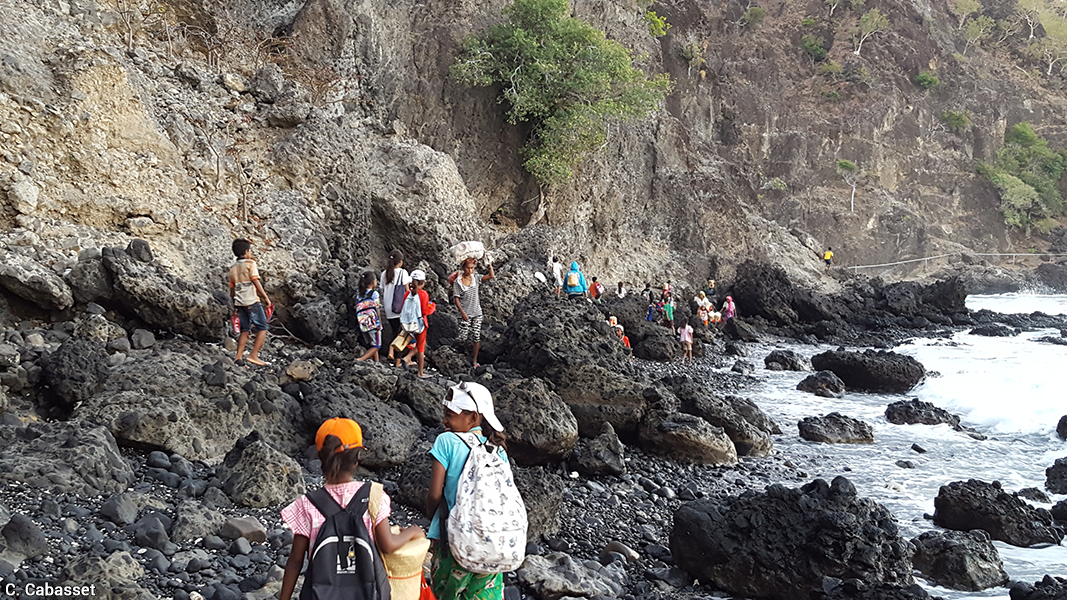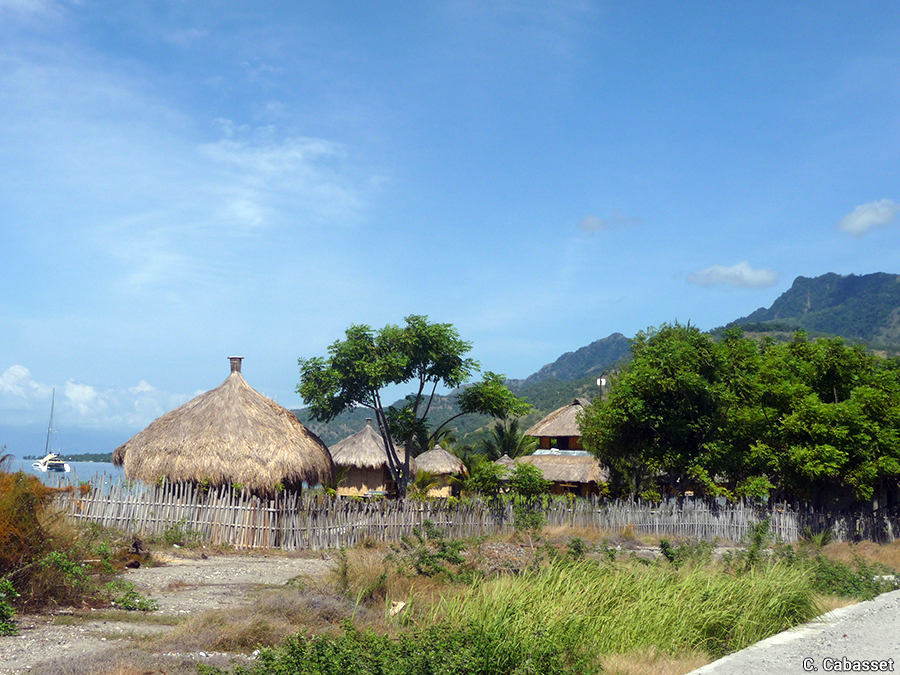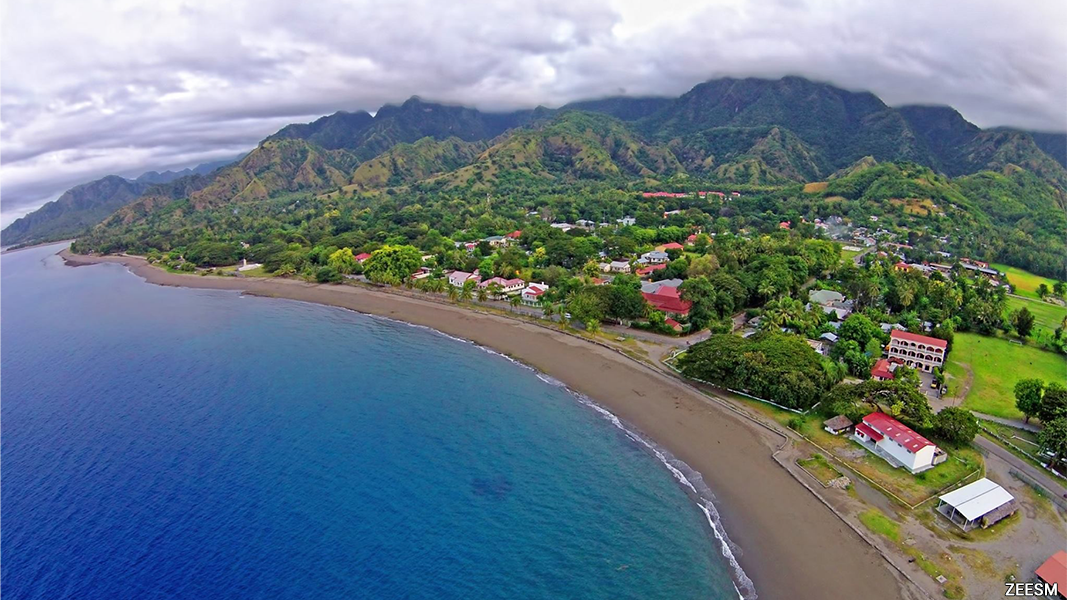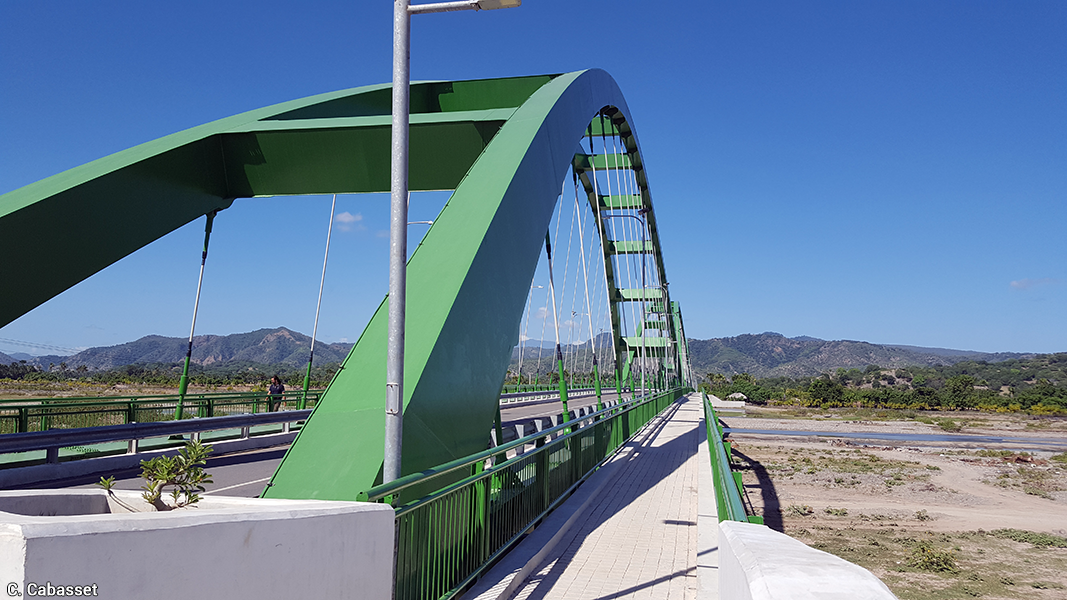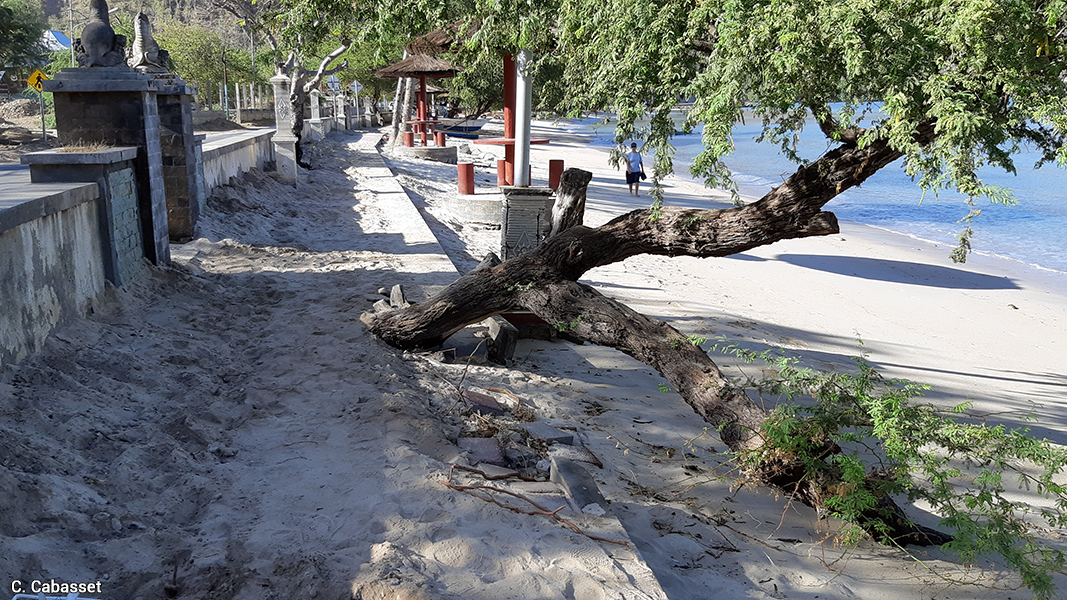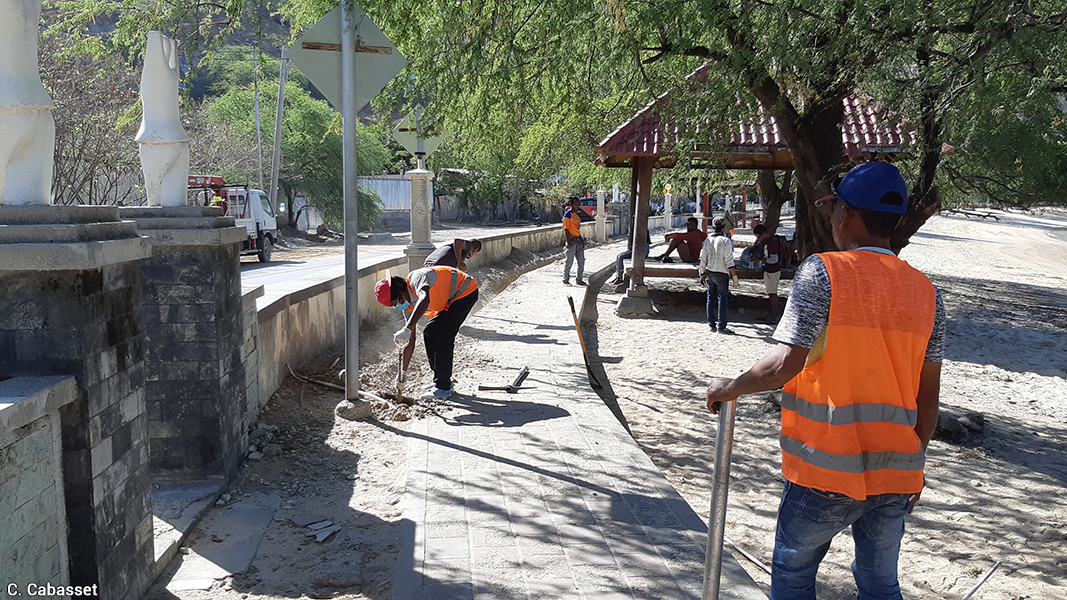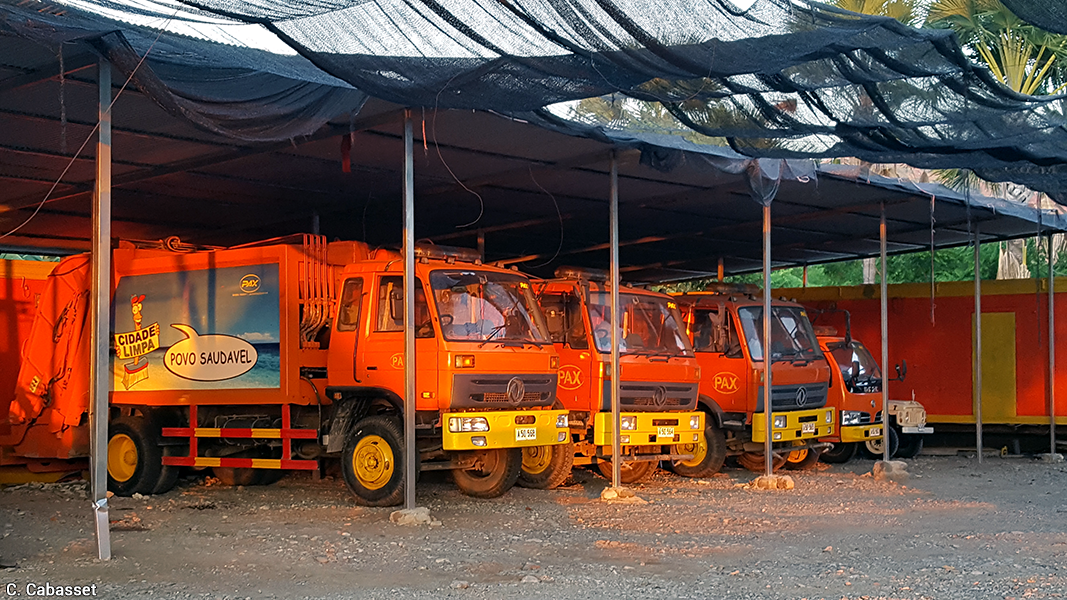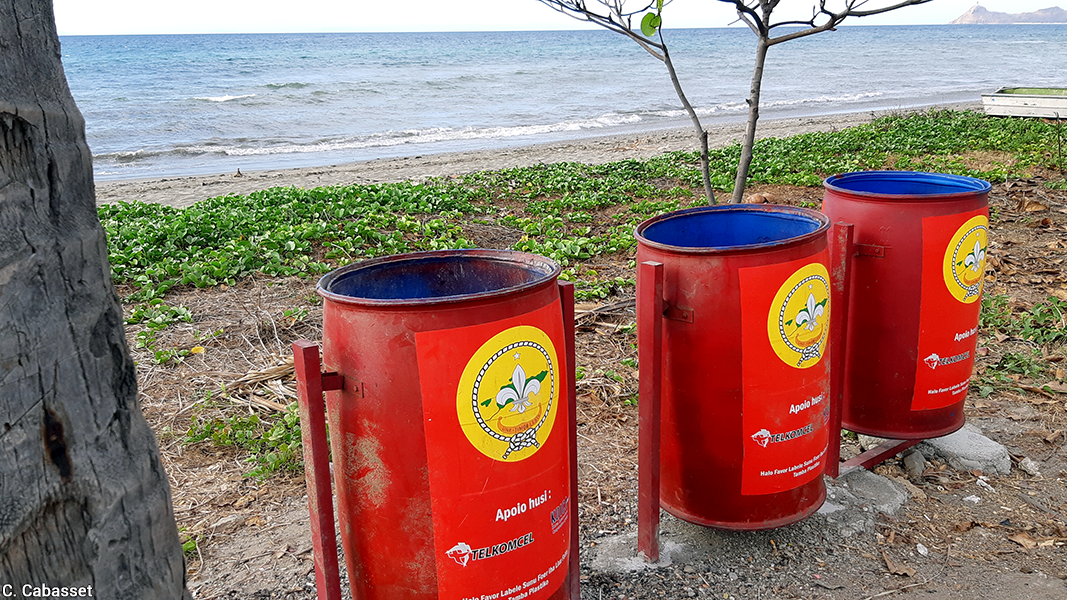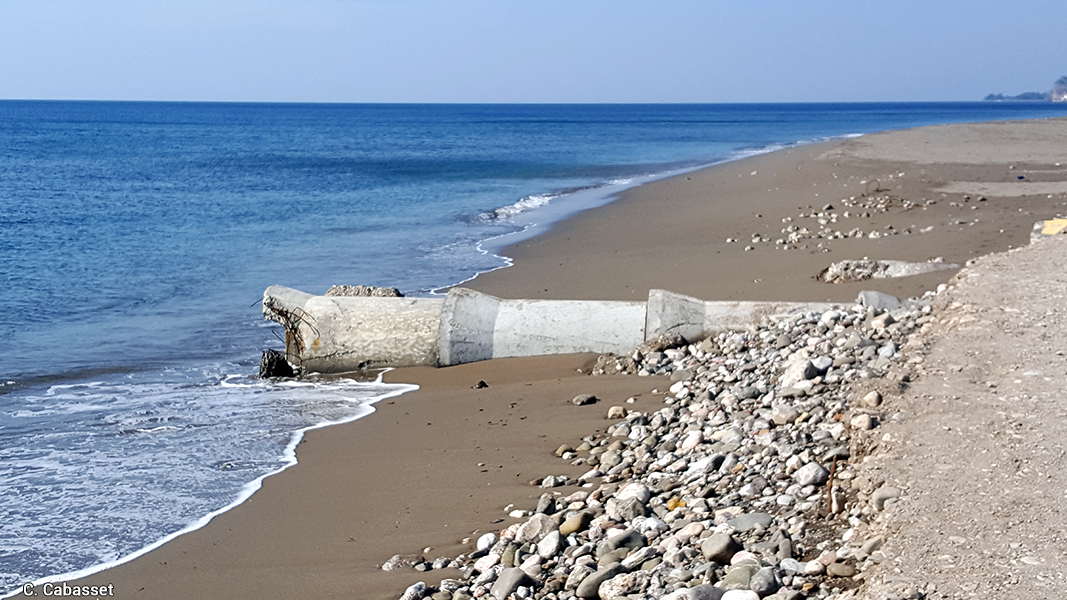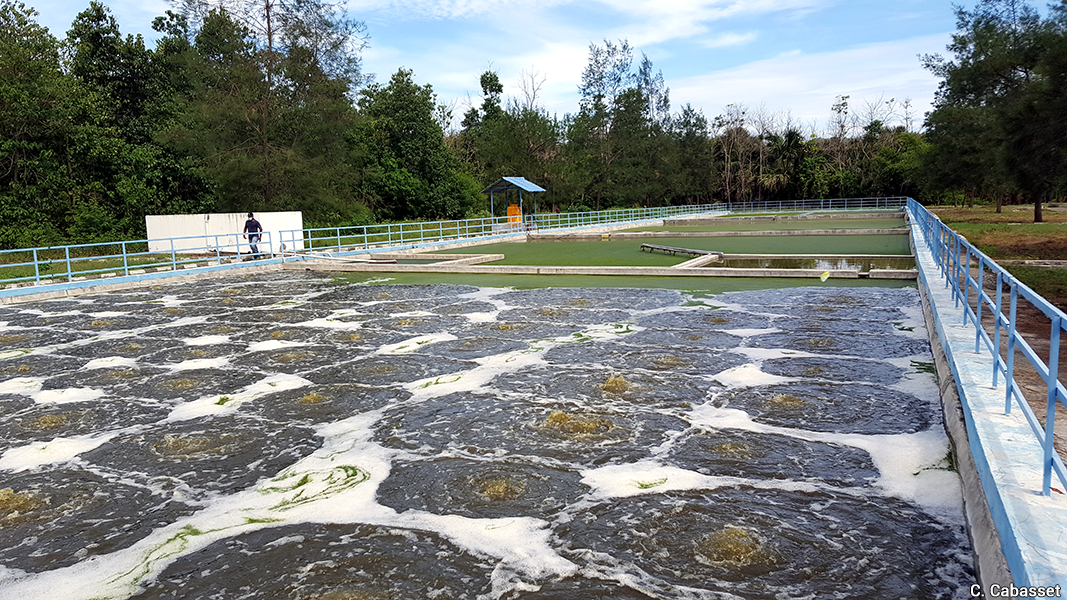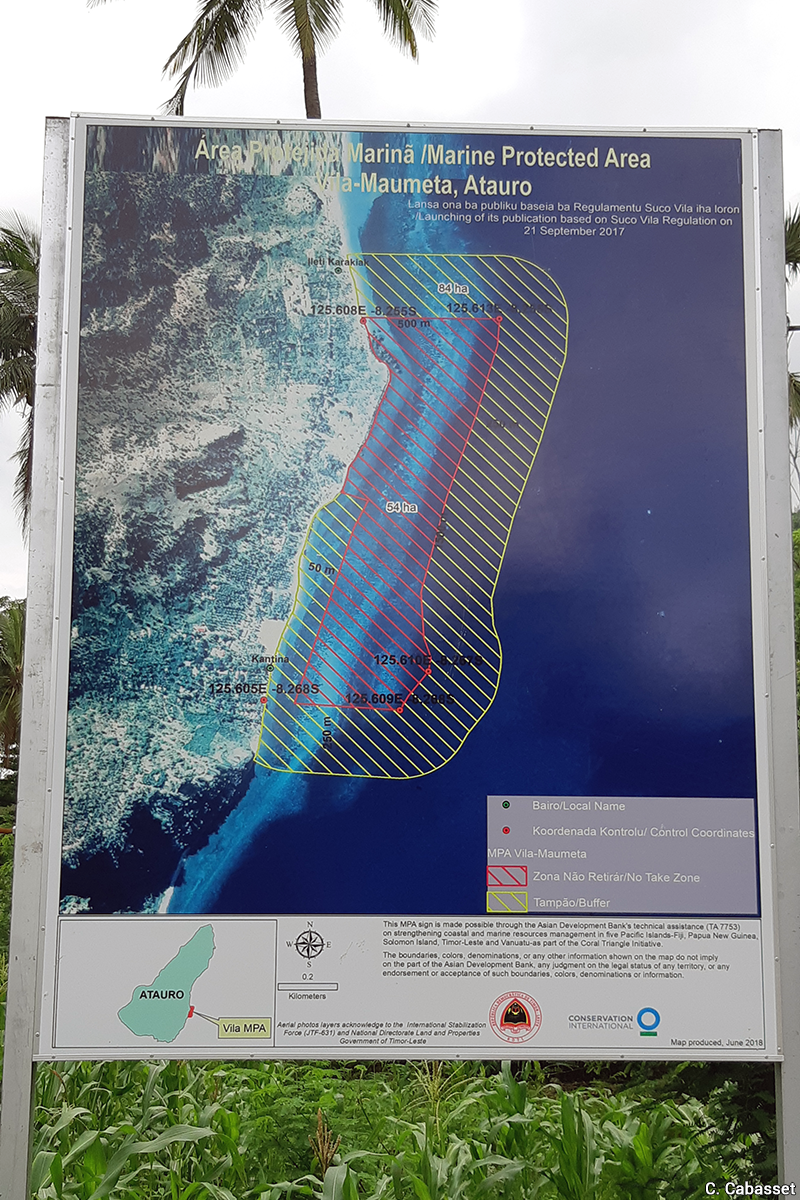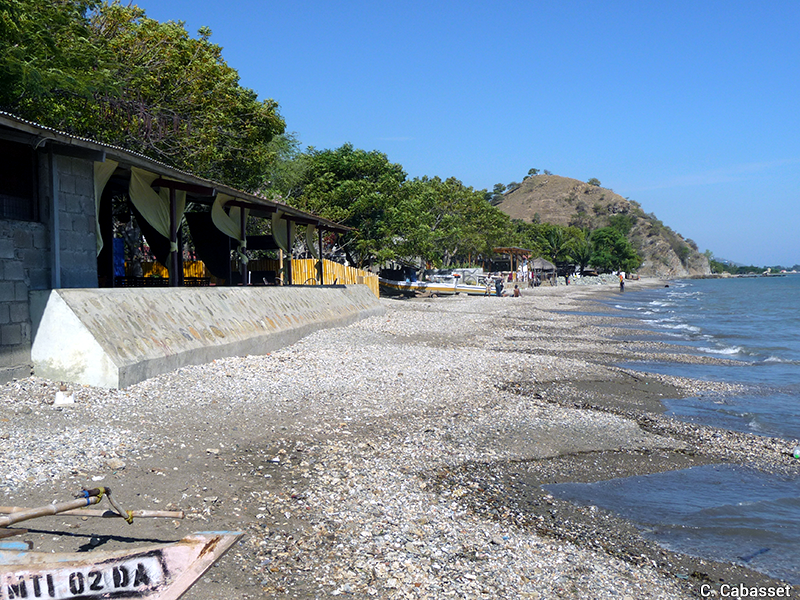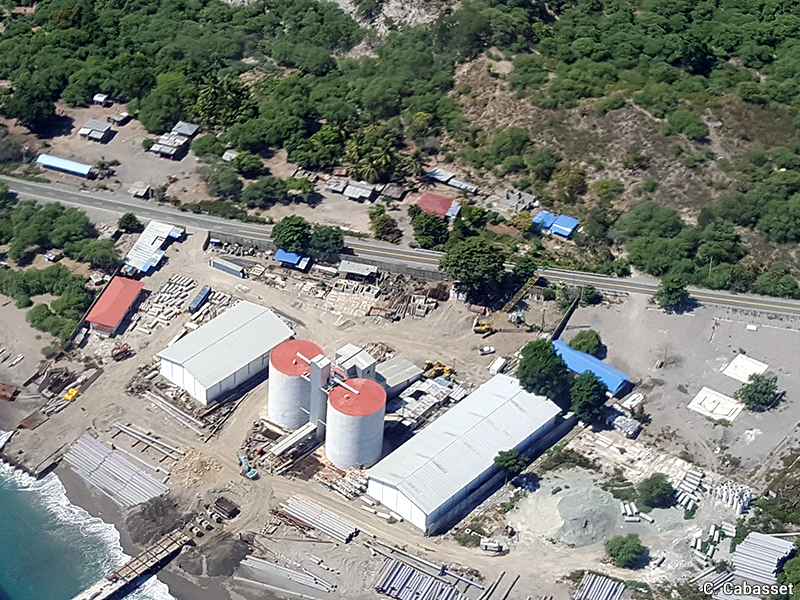Urbanizing Coastal Areas Facing Environmental Challenges: the Case of Timor-Leste
References | key words | citation | English | français
|
This article is based on the research programme "Coastal areas governance in the context of a rapid tourism urbanization and climate change in Southeast Asia" (RFCC, 2016-2019) Funded mainly by the Regional Forum on Climate Change - RFCC (FR-EU-ASE), it was led by Christine Cabasset (IRASEC), Vilas Nitivattananon (AIT Thailand), Agung S. Wiranatha (Udayana Bali University, Indonesia), with the collaboration of the National University of Timor LoroSa'e. carried out through nine case studies in three countries - Indonesia, Thailand and Timor-Leste. The research arose from the observation that coastal tourist areas in the region were suffering from severe environmental degradation. The piles of waste - often plastic - on the beaches or in the sea, the discharge of waste water into the sea, or the risks induced by coastal erosion in highly urbanised areas are some of the most obvious signs of this degradation. Photos and videos of these examples are regularly posted by tourists on social networks (Cabasset, 2019). Our initial hypothesis, based on extensive field observations, attributed this situation mainly to the permanent discrepancy between the pace of tourism development (growth of international arrivals and hotel and real estate programmes) and that of the provision of urban and environmental services (Cabasset, Nittivatananon, Wiranata, 2019).
|
Unlike in Thailand and Indonesia, where tourism activity developed between 1950 and 1970 and is characterised by a significant number of major tourist resorts, in Timor-Leste, the number of international tourists is still limited. The country's official independence only dates back to 2002, and it has no tourist hubs other than Dili, the national capital. Despite these differences, we felt it would be interesting to include the country in the regional study for comparative purposes. This case study analyses the orientations and governance methods used to conciliate tourism development and environmental preservation in the context of an emerging economy. Could Timor-Leste, a "young" country, have become a laboratory for sustainable development? Despite notable initiatives, the observations and conclusions of this study show significant weaknesses in these areas, in addition to revealing a lack of environmental risk culture, linked to deficiencies in the education sector. Many of these findings are nevertheless common to other South-East Asian coastal resorts or cities, often to a much greater extent given the scale of their population densities and tourist flows (Cabasset, Couteau, Picard, 2017; Peyronnie, Goldblum, Sisoulath, 2017; Sheng and Thuzar, 2012). In all three countries, however, the way local governance Understood as both the relationship between central and local governments, planning agencies, and other institutions, the delimitation of the perimeter of responsibilities, as well as the inclusion or not of key stakeholders. is expressed in a given space has emerged as a key factor, as the urbanism methods and the relation to the environment may differ greatly from one place to another.
1. The important stakes and challenges of national development
With a total area of nearly 15,000 km2 and a population of approximately 1.3 million, Timor-Leste shares the island of Timor with West Timor, which is part of Indonesia. Formerly a Portuguese colony (from the 16th century to 1975) and subsequently an Indonesian colony (1975-1999), the country gained its official independence on 20 May 2002. Since then, it has faced multiple challenges in national development. Despite significant progress in the social sphere with the introduction of free and universal basic education, free access to public health facilities, as well as a pension and social security system, 30.3% of the total population (in 2011) lives below the international poverty line (41.8% if the national poverty line is considered). Ever since independence, tourism has been identified as one of the priority areas for development. However, the country's late arrival on the international tourism scene, particularly in comparison with most other South-East Asian countries, combined with the poor efforts devoted to this sector, explains a certain "delay" in tourist flows and infrastructure. The national capital, Dili (276,000 inhabitants in the municipality according to the 2015 census, 230,000 to 250,000 inhabitants in the urban area), by far the main centre – urban, political, economic, commercial, academic, tourist, etc.–, plays a major role in national development. By contrast, the rest of the country is predominantly rural, with the vast majority of the population living off agriculture – often subsistence and livestock farming – and small coastal fishery.
|
The three case study areas – Dili, the island of Atauro some 30 km off the coast of Dili, and Pante Makassar, the regional capital of Oecussi A legacy of colonial rule, Oecussi is an East Timorese enclave in West Timor, Indonesia. – have in common that they are all located on the northern coastline of the country. The three areas are designated, albeit at different levels, as economic development hubs: the Tibar-Dili-Hera segment was declared a National Strategic Area in the Timor-Leste Strategic Development Plan 2011-2030; Oecussi became a Special Administrative Region (RAEOA) and a Special Social Market Economy Zone (ZEESM) in 2014; Atauro Island, administratively a sub-district of the municipality of Dili In 2021, the island of Atauro could obtain the status of municipality to support its development., is also associated with the ZEESM for its development.
Document 1: Administrative map, main transport infrastructures and location of the three study sites
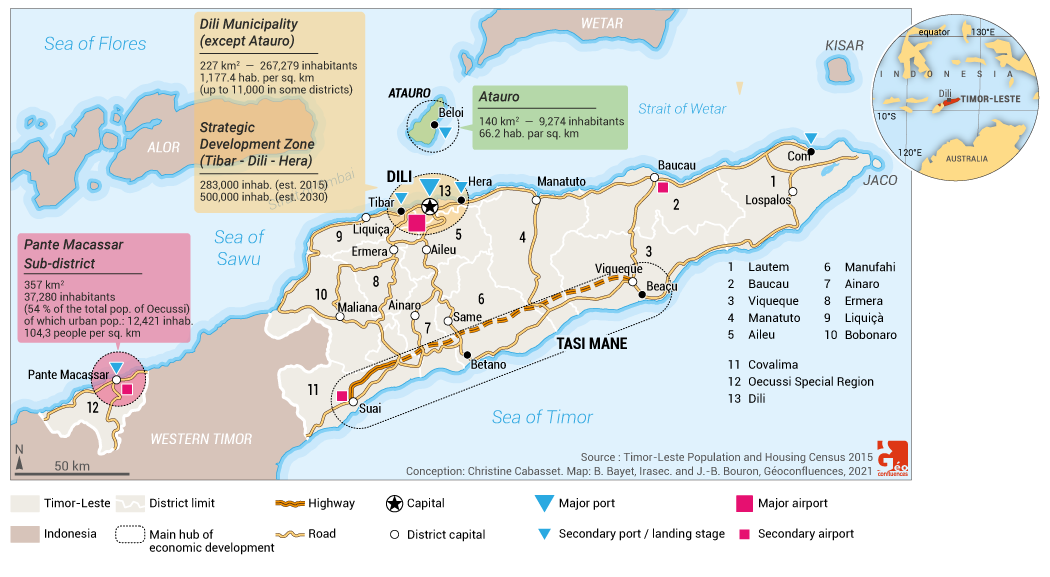
In Dili For further analysis of the demographic, spatial and planning dynamics of the country and Dili, see Cabasset, 2014., many official buildings have been built since 2002, as well as supermarkets and shopping areas, business centres, apartment blocks and residential developments; other constructions (commercial harbour, large hotels and shopping complexes) are underway or planned. The city has about 20 international standard hotels with 20 to 100 rooms, only some of which are located on the waterfront. This contrasts with the presence of seven or eight embassies on large plots of land, which is unusual due to the high land value of the coastline. The urban area of Dili expanded at the end of the Portuguese period, and then intensified during the Indonesian period and since independence. Today, there are plans to densify the entire coastal area of the Tibar-Dili-Hera strategic zone.
Document 2. The economic development hub of Dili (Tibar-Dili-Hera)
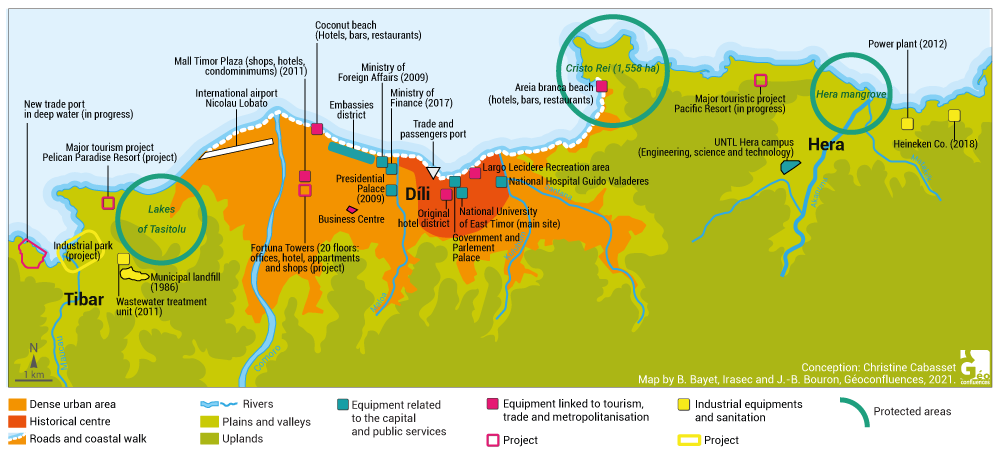
Document 3. Dili and the coast from the air
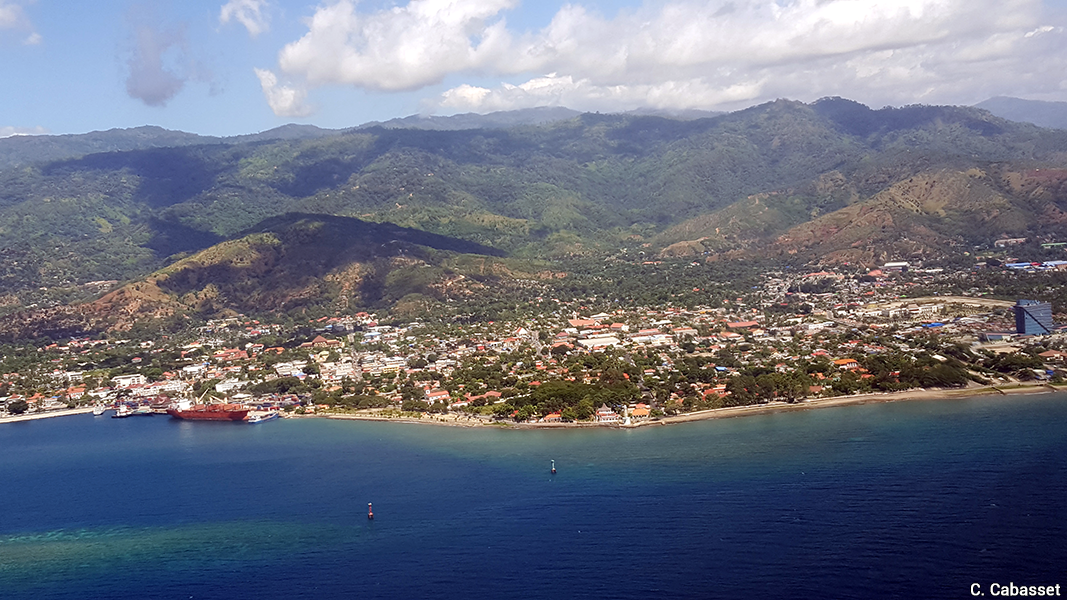 |
 |
|
Left: view of Dili, 2017, with on the far right of the photo the Ministry of Finance, the highest building in the city. Right: the coastline between Dili and Tibar, 2018. Photo credit: Christine Cabasset. |
|
Atauro Island is renowned for its local fishing activity, including underwater fishing. Mountainous, very lightly urbanised, with beautiful beaches and numerous diving sites, and accessible by boat from Dili in 1 to 3 hours, the island is a favourite destination for Dili residents and tourists. The hotel sector consists mainly of “local” architecture, with ecolodges (accommodation that puts ecology at the centre of their activity) and guesthouses, allowing a maximum capacity of about 40 people, plus a few campsites. The coastline has been the target of land speculation for several years. The tourism development plan commissioned by the ZEESM authorities in 2015-2017 considered the development of beach tourism in two main locations – which currently lack tourism infrastructure - in the north and north-west of the island, while local or community tourism was to be developed in other locations that already had experience in this field. However, little has changed since then, except for the extension of the coastal road from Beloi to Bikeli and beyond (for which construction is underway), and the island remains severely lacking in services (electricity, water and sanitation, transport, internet, etc.).
Document 4. Atauro Island, between protection and tourism development
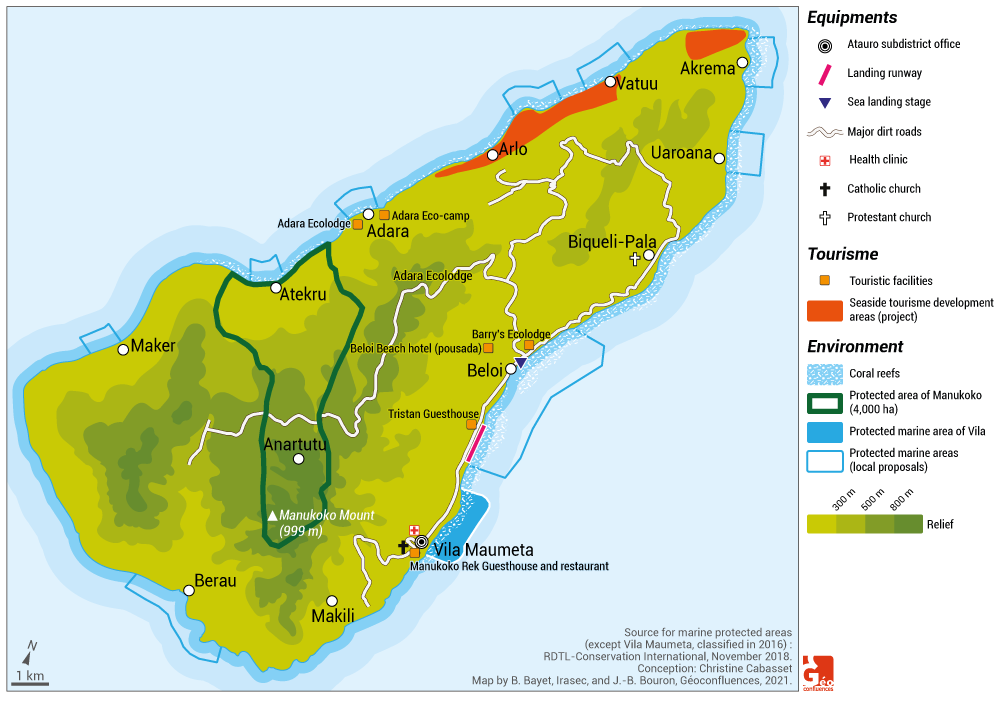
|
Document 5. At low tide, the coast remains the preferred route from Vila to Makili for the inhabitants, as the steepness of the road makes it nearly unpracticable |
Document 6. Water pipeline between Vila and Makili |
|
Document 7. Coastal road between Beloi and Bikeli |
Document 8. Barry Ecolodge |
|
Photos: Christine Cabasset, 2017 (documents 6 and 7) and 2018 (documents 8 and 9). |
|
Although no less aesthetically pleasing (the arrival by boat or plane is quite spectacular), Oecussi attracts far fewer tourists due to its isolation, its distance from Dili, and poor tourist facilities. With the poverty rate in the region being well above the national average, the ZEESM aims to make it an attractive area, both in terms of population and investment, betting on its proximity to West Timor and Indonesia. Regional governance has proven to be effective, as shown by the infrastructure completed (or planned and underway) since 2015, particularly in the sub-district and especially in the "city" of Pante Makassar.
Document 9. Pante-Makassar locality, Oecussi: main features and infrastructure

Document 10. Pante Makassar and its surroundings |
|
|
Pante Makassar seen from the air. Photo: ZEESM (undated). |
Mangroves of Pante Makassar (2018). Photo: Christine Cabasset. |
|
Hand harvesting, a stone's throw from Pante Makassar city centre (2018). Photo: Christine Cabasset. |
Noefefan Bridge over the Tono River (2018). Photo: Christine Cabasset. |
2. An "unspoilt" country facing many environmental challenges
With very little industry and road traffic outside of Dili, Timor-Leste enjoys a natural environment, both on land and at sea, that is often described as "unspoilt". Nevertheless, the country, which has a 783 km long coastline including coral reefs and mangroves, faces many environmental challenges. These are related to climate change and hydro-meteorological events, but also to anthropogenic pressure, especially in Dili.
2.1. A country with a dry tropical climate vulnerable to hydrometeorological events and climate change
Although the country is, at present, not affected by tsunamis and volcanism, of which ancient traces are visible, it is still subject to seismic risk. Nevertheless, due to its geographical position in the intertropical region, its tropical dry climate and its monsoon season, the main hazards it faces are by far hydrometeorological in nature, with alternating droughts (and associated fires) and sudden, violent rainfall causing pluvial and fluvial flooding and landslides. These episodes are exacerbated by the recurrence of the El Niño / ENSO phenomenon, which also affects neighbouring countries and more widely the intertropical regions. In addition to these general climatic conditions, there is a very marked contrast between the mountainous areas, particularly in the centre of the country, where they can reach 3,000 metres and are marked by abundant rainfall, and the warmer and much drier coastal areas, particularly on the northern side (Durand, 2002). The three areas studied share the same climatic conditions: a long dry season (more than six or seven months) and no more than five months of rainfall, with, moreover, great variability from one year to the next. Their vulnerability is reinforced by the geophysical conditions – the narrow coastal plains, the proximity of mountainous terrains, and the important presence of rivers in Dili (to which must be added 36 drainage channels, cf. Santos Almeida et al., 2015) and in Pante Makassar - but also by the increasing urbanisation around Dili, the deforestation of the slopes and watersheds and the diminution of mangroves.
Document 11. Map of agro-climatic zones
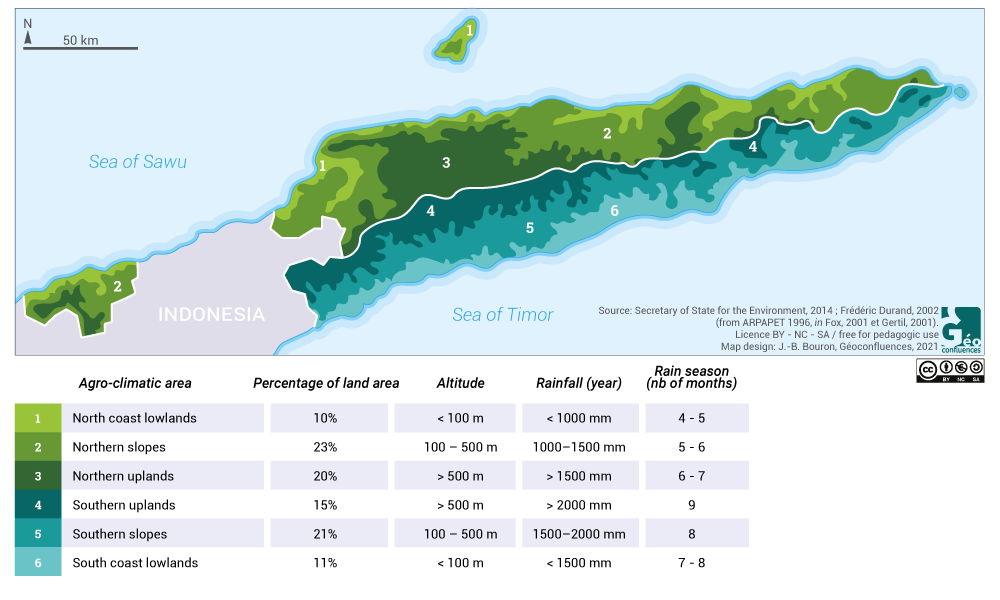
The heavy rains brought by La Niña in July 2010 (a particularly dry month) led to the isolation of many villages. The long El Niño drought (2015-2017) affected around 200,000 people in the country. More recently, torrential rains on 13 March 2020 severely affected the coastal areas of Dili within two hours, partially or totally destroying the homes of 1,700 families, or 10,000 people. The torrential rains that fell between 29 March and 4 April 2021 on Timor-Leste (and East Indonesia), as well as the rain, river and marine flooding and landslides, resulted in some 40 deaths, a dozen people missing, at least 12,000 internally displaced people, and more than 4,500 destroyed or badly damaged houses. Some areas of the coastal plain of Dili and the banks of the main rivers (notably the Comoro), where the most vulnerable households are concentrated, were the most affected.
While the density of government and NGO services in Dili means that residents can be rescued relatively quickly, Timor-Leste's national warning and relief system is still far from functioning effectively in emergencies, particularly because of limited technological, human and coordination capacities, resulting in excessively long response times by the authorities (Sagar, Cook et al., 2018: 43). To address this weakness, a new law promoting the decentralisation of civil protection is currently being drafted. At the same time, the use of new technologies via digital applications and telephone messages (already used for the past ten years in the health sector in particular) is increasing. The fact remains that a culture of environmental risk (Bélizal, 2019; Pagney Bénito-Espinal, 2019) is often still lacking, a trait that should be emphasised in a context where the fight against the Indonesian occupation (1975-1999) has given the populations more of a political and social risk culture.
Timor-Leste's greenhouse gas (GHG) emissions are negligible in the global and regional context. But, like others in the same case, the country is highly vulnerable to various climate change effects such as coastal erosion and marine submersion (Bamber, Oppenheimer and al., 2019; Duvat, 2015; Oppenheimer and al., 2019), in addition to increased climate variability. These risk factors are known to be increasing. This is a point that the East Timorese regularly emphasise at major global meetings on climate change, such as the COP21 in Paris (2015), and that constitutes one of the areas of research that links the territory to the Pacific Island States. Nevertheless, the effects of climate change are visible on the ground and are being noted by local fishermen and farmers. The study conducted in Dili in 2015 by two East Timorese academics at two coastal sites, Hera and Coconut Beach (the embassy district in downtown Dili), highlighted various hazards related to sea-level rise, in particular submersion and coastline retreat (Barbosa and Gusmão, 2015).
|
Document 12. Coastal erosion, Pante Makassar
|
Document 13. Farol (lighthouse) area in Dili at high tide
Photos 12 and 13: Christine Cabasset, 2018. |
Document 14: Flooding due to saturation of drainage channels in Dili |
|
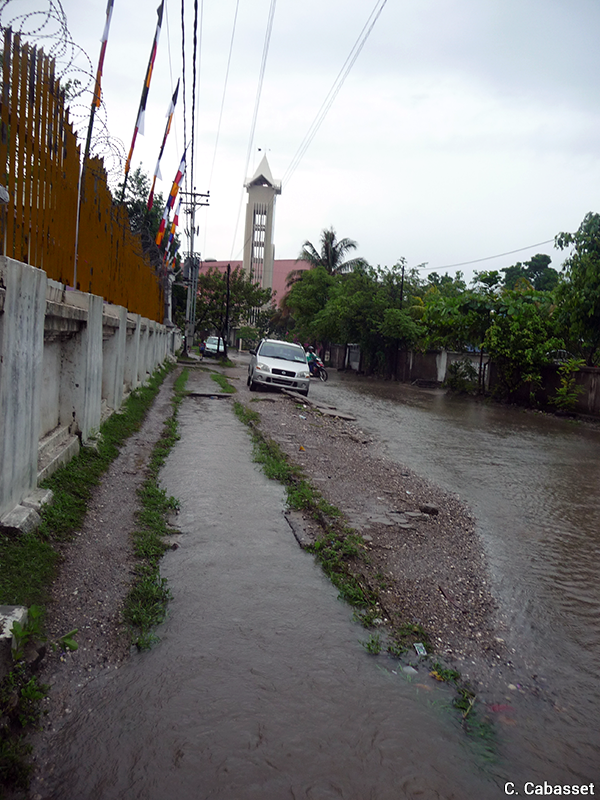 |
Photos: Christine Cabasset, 2012 (left) et 2014 (right). |
However, like many other regions in the world, the coastal fringes of Dili, Atauro and Pante Makassar concentrate human, economic and leisure activities. The objective of facilitating leisure activities and in particular non-motorised travel (walking and cycling) has led to the construction of promenades along Dili and Pante Makassar bays; these, however, encroach on the beach and are built using concrete. The coastal roads, often built in the late Portuguese colonial period (1960s-1970s), are now overhanging at high tide in several places due to coastal erosion and are regularly subject to marine flooding episodes. Surprisingly, roads or infrastructure have also been built or rebuilt recently in close proximity to the coastline. As a result, the government regularly has to intervene to restore them, just as it has had to build protective dikes to break the power of the waves, especially in Dili. Similar findings have been made in the main coastal tourist resorts of Indonesia and Thailand.
Document 15. Coastal protection structures in Dili |
|
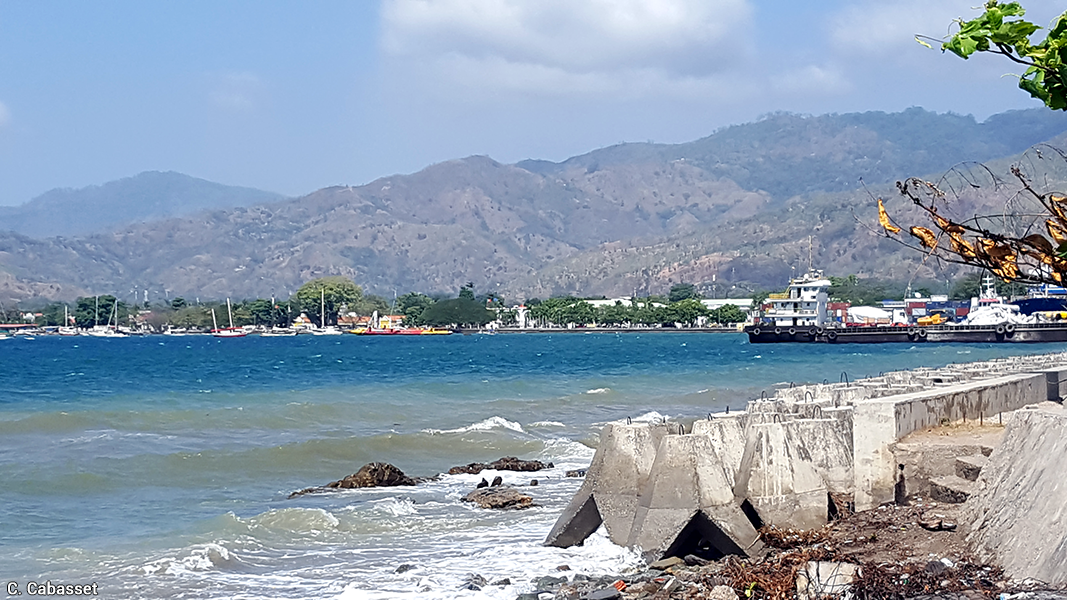 |
 |
|
Left: in the centre of Dili. Right: in Cristu Rei, Dili. Photos: Christine Cabasset, 2019. Document 16. Repairing of the damaged promenade, Areia Branca beach, Dili |
|
|
|
|
|
Photos: Christine Cabasset, 2019. Document 17. Coastal developments in Pante Makassar |
|
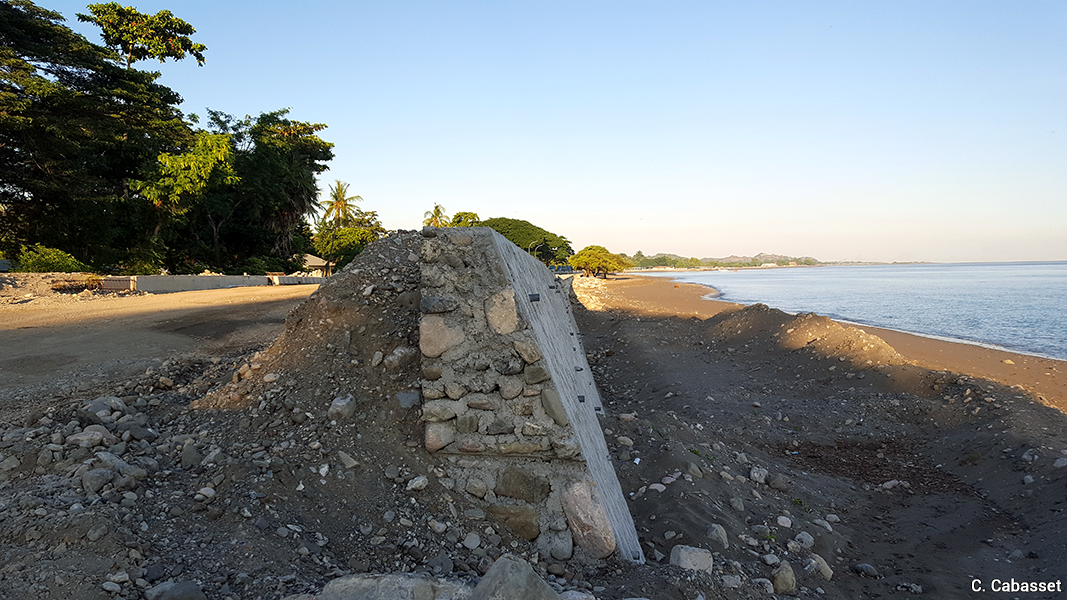 |
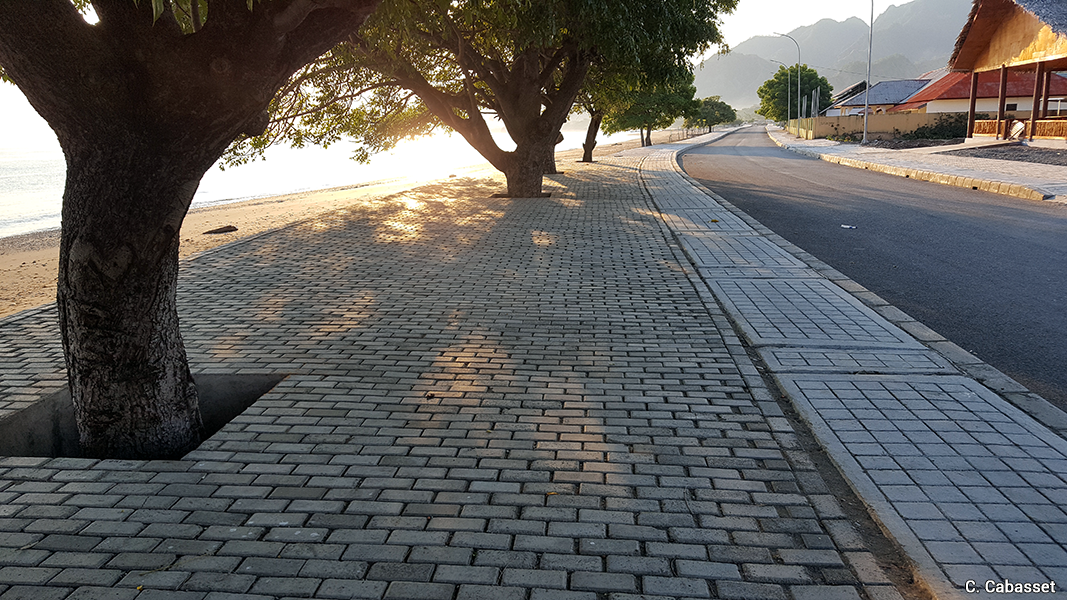 |
|
Left: construction of a protective wall between the sea and the road. Right: a promenade, pavement (covering rain drainage) and rehabilitation of the coastal road between the airport and the city centre. Photos: Christine Cabasset, 2018. |
|
2.2 Anthropogenic pressures: the case of wastewater and solid waste management
Wastewater treatment and the sanitation system are some of the black spots in urban management, leading to pollution of the sea, rivers, groundwater and soil, and the subsequent risks of contamination. After independence, the rehabilitation and improvement of Dili's drainage channels was an urgent task, as most of the network, which dated back to the Portuguese era, was very undersized compared to the city's demographic and spatial expansion. The lack of maintenance, but also the inhabitants' habit of throwing their waste into the canals or using some of them for Kankung (water spinach) plantations, contributed to the obstruction of the channels and the systematic occurrence of floods during the rainy season. Although much has been done since then to expand (in size and number of pipes and canals), clean the network and prohibit any non-drainage use, it will be a long-term effort to make the system effective.
Document 18. Vegetation in the canals reducing their drainage efficiency |
|
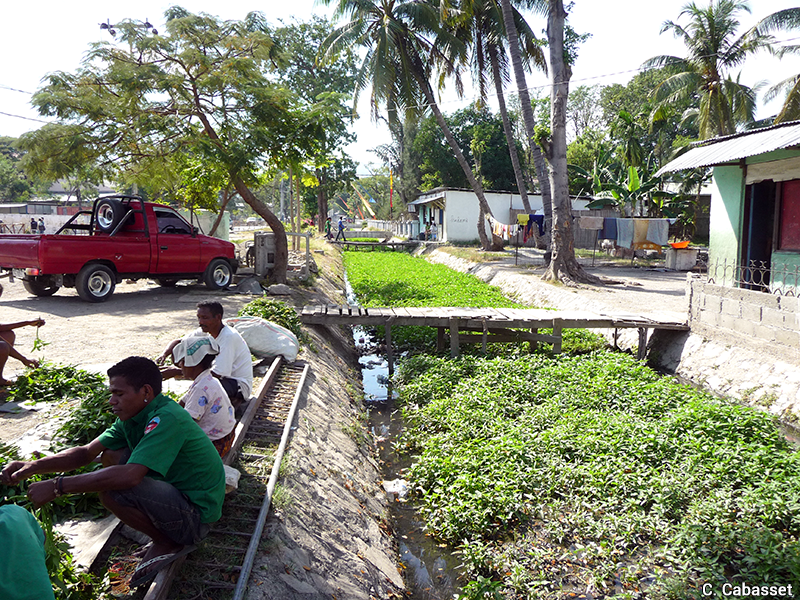 |
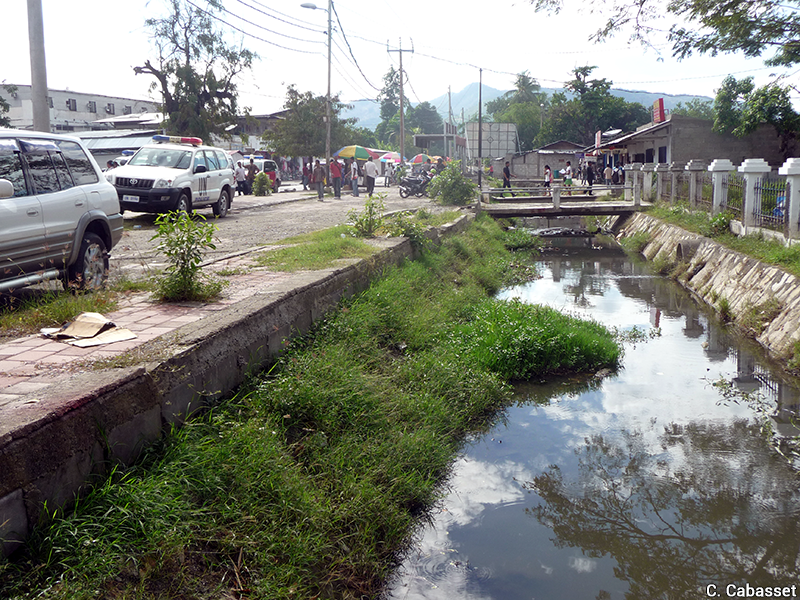 |
| Left: kankung plantations in a drainage channel in 2009 (since then prohibited). Right: spontaneous vegetation invasion before cleaning (2010). Photos: Christine Cabasset. | |
The lack of any sanitation network (sewers and treatment units) in the country is also problematic. To compensate for this, the central government and the municipality of Dili are in charge of collecting and transporting wastewater by tanker from septic tanks to the treatment plant in Tibar, located 10-15 km from the centre of Dili. The system is a second-best measure: only significant businesses - such as major hotels, apartment blocks or housing estates - equipped with septic tanks require the (paid) government service for pumping and transporting wastewater. A small proportion (estimated at 10% to 15%) of the total volume of wastewater is thought to be collected and treated. The government is working with Japanese cooperation (via the Japan International Cooperation Agency, JICA) on a sewerage project running from east to west through Dili, parallel to the coast. In view of the observations and interviews conducted on the same topic in southern Bali, it seems essential to consider the various technical options, to identify the priority objective (connection to the network or return on investment) and to discuss it with the various parties, including the users. Indeed, in Bali, although the sewerage network set up about ten years ago in the main tourist resorts is of prime importance, the network has overall failed: as connection is optional and users have to pay for it, cost is cited as the main reason for its rejection by most households, hotels and other tourist businesses.
Solid waste collection and treatment is another urban management bottleneck. This sector was identified as the country's third-largest source of GHGs in Timor-Leste's Initial Communication on Climate Change in 2014. In Dili, as elsewhere in the country, on-site burning of household waste is still the general rule. However, unlike most places in the country, Dili has a municipal waste collection system, operated by the private sector. According to official statistics, about 70% of the waste is collected and transported by truck to the landfill in Tibar, which, like the sewage treatment plant, is located less than 2 km from the sea. Moreover, the system only covers the four most populated sub-districts, so there is still room for improvement, including in the city centre and on the beaches. Since 2016, various government resolutions and decree-laws on solid waste management (national and Dili) and marine litter have been important steps in raising awareness of the problem and implementing improvements. Also, since the beginning of 2019, restaurants and several supermarkets have stopped distributing food trays and plastic bags, favouring biodegradable products made of cardboard or cassava (produced in Bali).
Atauro has no sewage, wastewater or solid waste collection and treatment systems. Motivated by the preservation of the environmental quality of the island, which is located in the Coral Triangle The establishment of the Coral Triangle in 2009 was a multilateral initiative to protect the exceptional richness of marine biodiversity in a region of the Pacific Ocean. This includes the Philippines, East Indonesia, Timor-Leste, Papua New Guinea, the Solomon Islands and Sabah in northern island Malaysia. and is known for its rich marine biodiversity, positive initiatives in these sectors have nevertheless emerged. These are driven by the private sector, mainly tourist accommodations and inhabitants, and supported by local NGOs and their foreign partners: examples include beach cleaning, the creation of marine protected areas, coral monitoring, local solutions for wastewater and solid waste treatment, compost, recycling, etc. In the long term, however, more organised solutions seem essential.
In Pante Makassar, the situation has long been the same as in the rest of the country outside Dili. However, since 2015-2016 the Region has been contracting a private company to clean public spaces and beaches in the city centre; it has also planned the construction of wastewater and solid waste treatment units (still not built in 2018). In addition, all roads built or rehabilitated have been equipped with wide pavements over rainwater drainage pipes.
Document 19. Waste and wastewater management |
|
|
Fleet of dump trucks, Pante Makassar (2018). Vehicles bearing the slogan (in Portuguese) "Clean city, healthy people". |
Rubbish bins on the beach in the city centre, Dili (2019). |
|
Sewage pipe pouring into the sea, Pante Makassar (2018). |
Dili wastewater treatment plant in Tibar (2017). Photos: Christine Cabasset. |
3. Governance faced with the dilemma between environmental protection and economic development
With the support of its international partners, Timor-Leste has been active in the areas central to our research: some 30 laws and regulations have been promulgated over the past 20 years at the national level, in addition to other legal provisions specifically concerning Dili, Atauro or Oecussi. In the field of protected areas, the national network has grown to a total of 46 in 2016, with more areas being created in Atauro. However, in these sectors as in others, the main problem lies in the communication, application and control - with adequate human, material and financial resources - of laws and regulations.
Document 20. Marine Protected Area and regulatory violations |
|
|
Information panel about the Vila-Maumeta (Atauro) marine protected area (2019). Photos: Christine Cabasset. |
Recent constructions in the non aedificandi zone: Restaurant in Metiaut, Dili (2014, top) and cement factory 50 km west of Dili (2018, bottom). |
The absence or low number of spatial plannings seems to us to be characteristic of the difficulties encountered locally. At the national level, the only document that serves as a planning tool, which has been followed by successive governments since its publication, is the Timor-Leste Strategic Development Plan 2011-2030. It was presented and discussed in all sub-districts of the country in 2010. Reflecting the multiple priorities of the time, it gives the main geographical and sectoral orientations in terms of institutional, economic and human development. However, it does not constitute a "Plan". Above all, for operational purposes, all municipalities are expected to have a territory planning. But the two trials carried out by the Portuguese agency Gertil in Dili in 2006, and then by the Japanese agency JICA in the Tibar-Dili-Hera area in 2016, have not been updated. In fact, despite the existence of a municipal administration (whose jurisdictions, officially acquired in 2016, are admittedly recent), Dili, like other capitals in the world, suffers from the overlap of responsibilities between the national and municipal levels. Faced with this, the Oecussi Region has clearly distinguished itself by the accomplishment, in a few years’ time, of a Land and Development Plan and of significant infrastructures: it is also the only Region to have been endowed with a development budget of 500 million US $ (to date). These financial means, as much as its status as a Special Region, worked in favour of the elaboration of a regional governance.
|
Regardless of location, although (or because) it is coveted, the coast has not yet received special attention: it is symptomatic that during our research (2016-2019), none of the many ongoing international aid programmes targeted coastal areas, with the exception of mangrove restoration (UNDP) outside urban areas. The government may have encouraged its partners to prioritise support for agriculture and rural and mountain populations, which is certainly crucial, but at the same time it was reluctant to consider programmes that could have paved the way to future constraints for the investments that it is calling for. As a result, although the challenges and risks of climate change are clearly stated in national documents, the legally declared non aedificandi coastal strip is only 50 metres, while building standards (location, architecture, materials, height) are still non-existent. On the other hand, Bali, which is an hour and a half away by plane, is emblematic of an island where, since the 1970s, the non aedificandi zone has been (when respected) 100 metres from the high tide line and the maximum height of buildings is fixed at the size of a coconut tree, i.e. 15 metres (which is original in the Indonesian and South-East Asian context). Large-scale projects in Timor-Leste have been subject to an environmental licence since 2011, which can be obtained only after an environmental impact assessment has taken place and an environmental management plan has been established. However, many of these projects, both public and private, are initiated or carried out without an environmental licence, due to a lack of knowledge of environmental issues or the intervention of political networks and corruption. Moreover, as in many other Southeast Asian countries, political decisions often reveal the dissociation between "economic development" and the "environment", while the link between "risks" and "spatial planning" is still not very clear. With the arrival in government of ministers and staff trained in these issues, however, significant measures have been taken in the field of the 'environment' (Cabasset, 2020).
Conclusion
Over the past two decades, Timor-Leste has made spectacular progress in many areas, such as security and socio-economic development, and is one of few democracies in Southeast Asia. This progress, but also the weaknesses noted in this article in the planning and environmental sectors, need to be understood in the light of the considerable work the state has had to undertake since 1999 and 2002 (see epilogue). While the historical legacy continues to weigh on the population, infrastructures and services today, recent independence means that spatial planning concerns are still new (Cabasset, 2014). The feeling of being overwhelmed expressed by officials encountered for this research, born out of the large number of priorities since 2002, may also be fuelled by a lack of political will, funding, coordination and quality training (at all levels). However, the country can take credit for the presence of active NGOs, local dynamics in the field of agriculture (permaculture, organic farming) and the reactivation of local knowledge (Tara Bandu While most local ceremonies and rituals were banned between 1975 and 1999, various traditional practices were revived in the early 2000s. These include the Tara Bandu, a ritual based on the balance between humans and nature, which involves community customary rights and duties according to what was taken from nature, both on land and in the sea. See Amaral de Carvalho and Coreia, 2011.) in the preservation of natural resources and social cohesion, as well as a growing interest in environmental issues. However, one of the interests of this study was to show, in Timor-Leste as well as in the other countries under study (Indonesia and Thailand), how coastal areas, especially when they are urbanised, often remain a blind spot in land use planning, which is constrained by climate change, due to a lack of knowledge of the environment and the priority given to economic issues. Thus, for external observers and local environmental NGOs alike, this "new" country did not become a laboratory of good practices in "sustainable development": it rather illustrates a missed opportunity.
|
Bibliography
- Amaral de Carvalho Demetrio and Coreia Jose, 2011, "Tara bandu nudar: Matenek ekologia tradisional" [About Tara Bandu: traditional ecological knowledge], in Amaral de Carvalho (ed.), Matenek Lokal Timor Nian [Local knowledge of the East Timorese], UNESCO, Dili, p. 52-67.
- Badie Bertrand, 2018, Quand le Sud réinvente le monde. Essai sur la puissance de la faiblesse [When the South reinvents the world. An essay on the strength of weakness], La Découverte, Paris.
- Bamber L. Jonathan, Oppenheimer Michael and al., 2019. « Ice sheet contributions to future sea-level rise from structured expert judgment ». Proceedings of the National Academy of Sciences-PNAS [online]
- Barbosa Soares Adão, Gusmão Marçal, 2015. Climate change impacts and vulnerability assessment report for Hera and Pantai Kelapa, Center for Climate Change and Biodiversity (CCCB), Faculty of Agriculture, National University Timor Lorosae, Dili, 83 p.
- Bélizal Édouard de, 2019. « Le volcan Merapi (Indonésie) : espaces et temporalités du risque sur un volcan indonésien singulier » [The Merapi volcano (Indonesia): spaces and temporalities of risk at a unique Indonesian volcano], Géoconfluences, September 2019.
- Cabasset Christine, 2020. « Timor-Leste. Petit, lointain… et aux cœurs de préoccupations stratégiques » [East-Timor. Small, far...and at the heart of strategic concerns], in Cabasset Christine and Tran Claire Thi-Liên (eds.). L’Asie du Sud-Est 2020. Bilan, enjeux et perspectives [South-East Asia 2020. Overview, issues and perspectives]. IRASEC-Les Indes savantes, p. 375-399 (and yearly editions since 2010).
- Cabasset Christine, 2019. « Tourisme littoral et risques environnementaux » [Coastal tourism and environmental risks], in Pierdet Céline and Sarraute Éric (eds.), L’Asie du Sud-Est. Une géographie régionale [South-East Asia. A regional geography]. Ellipses, p. 465-480.
- Cabasset Christine, Nitivattananon Vilas, Wiranatha S. Agung, 2019. Final Report on Coastal areas governance in a context of rapid tourism urbanization and climate change in Southeast Asia (project for the Regional Forum on Climate Change-RFCC 2016-2019) (np).
- Cabasset Christine, Couteau Jean, Picard Michel, 2017. « La poldérisation de la baie de Benoa à Bali : vers un nouveau puputan ? » [The reclaiming of the Benoa bay in Bali: towards a new puputan?]. Journal Archipel 93, p. 151-197.
- Cabasset Christine, 2014. « L’aménagement du territoire au Timor-Leste : un enjeu récent entre héritage historique et internationalisation contemporaine » [Land planning in East-Timor: a recent challenge between historical heritage and contemporary internationalisation], in Corte Real de A. Benjamim, Cabasset Christine, Durand Frédéric (eds.), Timor-Leste contemporain. L’émergence d’une nation [Contemporary East-Timor. The advent of a nation], IRASEC-Les Indes Savantes, Bangkok-Paris, p. 279-308.
- Chandara Sagar Vishalini, Cook Alistair D. B., Nair Tamara, Ne Foo Yen, 2018. Integrating a Disaster Response Architecture in Timor-Leste: Opportunities and Challenges, NTS Report No. 8, S. Rajaratnam School of International Studies, Singapour, 46 p.
- Durand Frédéric, 2002. Timor Lorosea’e, pays au carrefour de l’Asie et du Pacifique, un atlas géohistorique [Timor Lorosea'e, a country at the crossroads between Asia and the Pacific, a geohistorical atlas], Presses universitaires de Marne-la-vallée-IRASEC, Marne-la-Vallée-Bangkok, 208 p.
- Duvat Virginie, 2015. « Changement climatique et risques côtiers dans les îles tropicales » [Climate change and coastal risks on tropical islands], Annales de géographie 2015/5, n° 705, Armand Colin, p. 541-566.
- Oppenheimer Michael, Glavovic Bruce and al., 2019. "Sea Level Rise and Implications for Low-Lying Islands, Coasts and Communities”. In: IPCC Special Report on the Ocean and Cryosphere in a Changing Climate [Pörtner Hans-Otto, Roberts D.C., Masson-Delmotte Valérie et al. (eds.)], p. 321-445.
- Pagney Bénito-Espinal Françoise, 2019. « Construire une culture du risque efficiente ? Le cas de la Guadeloupe et de la Martinique » [Building an efficient culture of risk? The cases of Guadeloupe and Martinique], Géoconfluences, December 2019.
- Peyronnie Karine, Goldblum Charles, Sisoulath Bounleuam (eds.), Transitions urbaines en Asie du Sud-Est. De la métropolisation émergente et de ses formes dérivées [Urban transitions in South-East Asia. Emerging metropolisation and its derivates], IRD / IRASEC, Marseille, 2017.
- RDTL-State Secretariat for Environment, 2014. Timor Leste’s Initial National Communication Under United Nations Framework Convention on Climate Change, Dili, 182 p.
- RDTL-State Secretariat for Environment, 2010. Timor-Leste National Adaptation Programme of Action (NAPA) to Climate Change, Dili, 108 p.
- Santos Almeida Octavio R., Piedade Brás João, Da Cruz Gustavo, 2015. “The Geography of Dili and the Flood Control Problems”, Second Makassar International Conference on Civil Engineering, 11-12 August, Makassar, Indonesia.
- Sheng Yap Kioe, Thuzar Moe (dir.), 2012. Urbanization in Southeast Asia. Issues and impacts. ISEAS, Singapore, 387 p.
Key words
Climate change | risk culture | El Niño / ENSO | issues | GHGs | governance | La Niña | coastline | mangroves | risks | vulnerability | free zone.
Christine CABASSET
Doctor in geography and territory planning, deputy-director at the Institute for Research on Contemporary Southeast Asia (IRASEC; CNRS/MEAE, Bangkok), associated with the Center for Southeast Asian Studies (CASE; EHESS/CNRS/INALCO)
Traduction by the author, reviewed and corrected by Vanessa Guignery (Professor at ENS de Lyon) and Marion Coste (editor of the Clé des langues website)
Web layout : Jean-Benoît Bouron
Cite this text:
Christine Cabasset, "Urbanizing Coastal Areas Facing Environmental Challenges: the Case of Timor-Leste", Géoconfluences, March / April 2021.
URL : https://geoconfluences.ens-lyon.fr/programmes/dnl/dnl-hg-anglais/amenagement-littoral-timor
Pour citer cet article :
Christine Cabasset, « Urbanizing Coastal Areas Facing Environmental Challenges: the Case of Timor-Leste », Géoconfluences, mars 2021.
https://geoconfluences.ens-lyon.fr/programmes/dnl/dnl-hg-anglais/urbanizing-coastal-areas-timor



 Mode zen
Mode zen